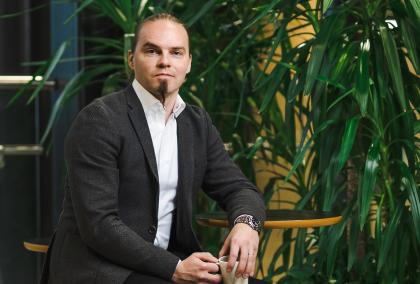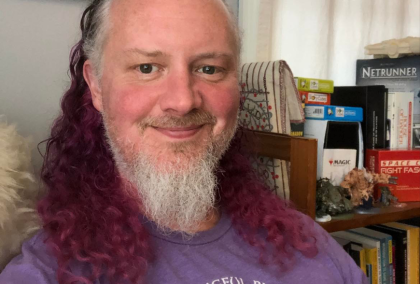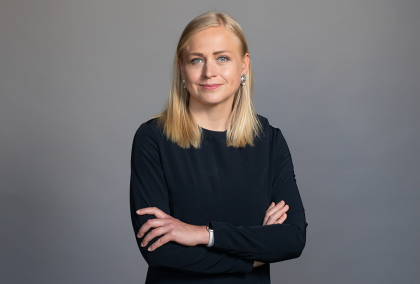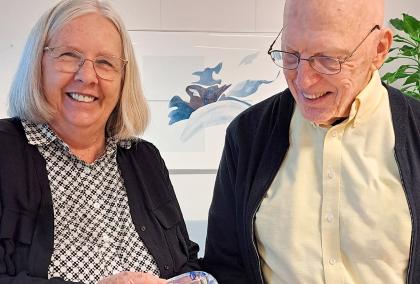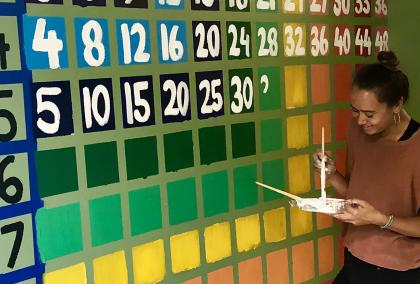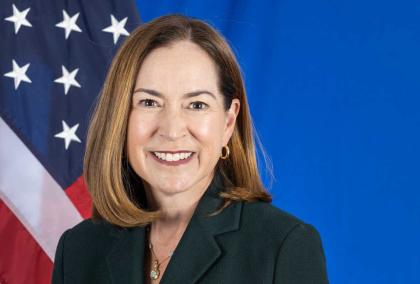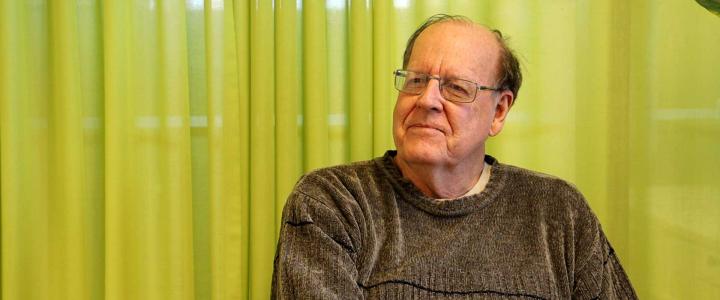

Professor Jim Fairweather has dedicated his professional life to improving higher education. A specialist in STEM, a teaching approach that combines science, technology, engineering and mathematics, Jim has worked for many years researching and teaching higher education administration at Michigan State University.
In 2003, a Fulbright scholarship took him to the University of Tampere’s Department of Administrative Science, where he worked alongside Finnish colleagues to develop new graduate programs in higher education administration. Jim’s contribution was key to establishing a new unit within the university, the Higher Education Group, in addition to expanding new doctoral and masters programs for higher education professionals.
Since then, Jim has returned to Tampere almost every year to keep the collaboration going, while enabling additional exchanges between researchers and students of the two institutions along the way. Today, he continues his work as Professor Emeritus of Higher and Adult Education, remaining active in research and particularly in teaching, splitting his time between Michigan State and Finland, where he continues to collaborate with Tampere and Fulbright Finland Foundation on graduate teaching.
A Student-oriented Approach to Higher Education Administration
Jim explains that his interest in higher education administration began due to his own experience studying at Michigan State University (MSU). As an undergraduate, he took an experimental program at MSU’s Justin Morrilel College, where students developed their own majors. “It was a really terrific experience being in the liberal arts college on a big campus. I got interested in how the university develops such a place. It turned out they had adopted an Oxford-Cambridge model of an independent college. The main thing is that they are definitely student-oriented. They're not really set up for the faculty to be the stars. Some kids do better in those kinds of environments.”
“That’s how I got interested in the whole idea of how universities decided to adopt and use such programs. And that's really what took me into higher education.”
This interest led him into higher education research at Stanford University, where he completed his PhD in 1980, focusing on how to help people prepare for working in a new higher education model.
As one of the leading researchers on higher education administration within the U.S., still Jim wanted to expand his knowledge and do something useful in the process, which brought him to Fulbright and the University of Tampere. How did he come to consider Finland? It wasn’t so much the country, as the project content, that inspired his choice, he explains.
“I had learned from friends here that you are better off looking for an activity that's a good fit rather than picking a geographic location.”
At the time, Finland was a pioneer in higher education administration research and teaching, Fairweather explains. “This happened to be a time when Finland was starting to create PhD programs in Higher Education Administration and it was really the only country that was interested in doing that,” Jim explains. “I'd met a couple of people from Finland before, but I didn't really have any strong contacts. I remember talking to my wife, saying, ‘What do you think about going to Finland?’”
They decided to take the plunge, and moved to Tampere - a decision which Jim says led to a life-enriching experience. “We got there and we had a great time. We've made some terrific friends,” he says.
But most importantly, Jim felt his project was something his host institution - and host city - urgently needed. “I've been to many other higher education centers, but it seemed to me like I could really make a difference there. They were really just starting out and developing an entire doctoral program. Eventually they were going to be in the process of moving from a ministry-based higher education system to one with local control, with their own boards and so on. And they needed to prepare people to run those kinds of institutions.”
“One of the things I've learned is that it’s very important for a country to have a higher education system that fits their culture. The Finnish model is very much like the old German model where there's a fixed number of professors. You have to wait till someone retires or dies before a position opens. That's really not a very good fit for an egalitarian society. You don't want to have a system where talented young people see no future for themselves. What we tried to do is build a program that offers courses and experiences to help people see a path for themselves in the system.”
The Beginning of a Long Friendship with Finland
As a regular visitor to Finland over a 20-year period, Jim has been in a fairly unique position to witness at first hand how the country and its institutions have changed over the years. He still recalls with amusement a few initial culture shocks.
“Finland has changed so much since then, but when I was first there, it was very traditionally Finnish. I had to get instructions on how to use the banking system because it was all in Finnish,” he recalls. “Today you go to an ATM machine and it asks whether you want it in English, Finnish or Swedish! Back then, if you took a local bus, you would only hear Finnish spoken. Today you have all these students coming from all over the world, and most of them are speaking English, so even on the bus, all of that has changed,” he reflects.
“Probably the biggest shock for somebody coming from the U.S. where we have residence halls with students living on campus, so our campuses are much bigger - at Michigan State, we have 17 000 students living on campus,” he says.
“Well, in Tampere, they're living in the city and places owned by the student unions. I wasn't sure if I'd actually found the university the first time I went there because it seemed so small!”
Jim soon settled in and found himself part of the university community – a relationship that continues to the present day. “They keep inviting me back, and I've developed some courses to teach there. Over time, my role has changed. At first I would mainly work with doctoral students, going to Helsinki and sometimes other cities in Finland like Rovaniemi. Over time, they've developed several Erasmus Mundus masters programs, so for the last few years I’ve been mostly teaching in those programs, and it's been a lot of fun too.”
“From my more recent experiences, the younger students are fairly well prepared to think about working in higher education administration - that's why they joined the program. But they seem as much interested in information about developing their own profession, their professional expertise and understanding what career paths look like. For example, if they were to go to the US, what would they need to do? More than coursework, I spend time talking with them over coffee about things like that, not just what's going on in the class.”
The programs attract a truly international cohort of students, from Europe, Asia, Latin America, and Africa, Jim explains, and he has also been able to see the ongoing benefits of his initial collaboration. “It’s been quite fun because two or three of the PhD students I taught when I first went to Finland are now the faculty running the program. That's pretty cool.”
Personal Links Help Institutional Relationships Thrive, but Funding is Essential
The friendships and professional connections with Finland have also brought benefits to his home university, both in terms of comparative teaching models and in exchange of people and ideas. “We’ve had several Finnish professors come to Michigan State to teach here. So we had quite a bit of back and forth. But I think, fortunately or unfortunately, those relationships tend to be more personal,” Jim says.
Personal connections are key, he explains, but when people retire or change roles, there is a risk that relationships between institutions may fade. Meanwhile, the upheaval brought by the COVID-19 pandemic has also been a huge obstacle to maintaining international exchanges, both formal and informal. “COVID stopped everything. So. I was very, very glad to be able to get back and see people again.”
Jim explains that other more everyday administrative challenges are also factors in building and maintaining international relationships. Budgets and funding are crucial, especially now that money is typically centralized within university administrations. “Money has to be built into the programs for a long time… it’s not just personal – the administration has to be on board.” In his case, he says, he has a very supportive department chair, who also maintains links with Finland.
Want a Successful Fulbright? Go Where You Can Make a Difference
The key to a successful Fulbright experience is to go where you are needed, Jim advises.
'“This was something where I could really make a contribution. It was something they needed - and it was something I enjoyed and it helped me to grow as well. I've had sabbaticals in the past where people made room for me, and we were friends, but they didn't really need me there. I think there was a need in Finland - and that's something that's lasted.”
I've had sabbaticals in the past where people made room for me, and we were friends, but they didn't really need me there. I think there was a need in Finland - and that's something that's lasted.
This long-term relationship means Jim has been able to visit and revisit Tampere over the years, and see the city continue to grow and develop - and to see how his original Fulbright project has blossomed over the intervening twenty years, as former students become the professors, and the university grows its higher education administration programs to reach even more students and professionals.
Jim says that his years of experience and exchange with Finnish higher education has not only given him “a lot of friendships”, but also “a greater appreciation for the kinds of challenges we have in the U.S.”
“Probably the biggest challenge we face in the U.S. is the cost for students to go to university, and the debt they accumulate. The European funding system is quite different and you don't typically see students feeling like it's such a financial commitment that would affect their choice of whether to go to university or not.”
Jim also highlights different perspectives on higher education across the Atlantic. “The U.S. puts too much emphasis on individual benefits and not enough on the public benefits of higher education, but I think in some ways, Europe has the opposite approach, where there's a very good argument for seeing the university as a public good. But perhaps Europe also needs to emphasize more the benefits for the people who go to university. I think both sides can learn from that.”
Attitudes to Fulbright also differ in the U.S. and in Finland, he suggests. “In the U.S., Fulbright tends to be more individually-focused because the institutional needs are not always seen as being solved by having a Fulbright connection. But Finland is not a big enough country to have people covering every conceivable academic field. Fulbright is a great way to fill some of the gaps and maybe start establishing new programs that would otherwise be too difficult to achieve just by looking locally.”
Fulbright Highlights the Importance of Learning from One Another
Exchanging ideas and learning from one another is core to Jim’s philosophy – and he says this is something that we need more of, both internationally and within one’s own country.
“It's not just international. I do a lot of work with people in the U.S. trying to improve undergraduate science education and it's interesting that sometimes the reputation of the institution hurts itself. There are lots of universities doing good things and improving their teaching and they're not all at the very top. By refusing to even look at the full range of innovative institutions, the lead institutions are really missing an opportunity. And I think that's true internationally, too - just because you don't know something about an institution doesn't mean they're not doing good things.”
“We're clearly living in an era that emphasizes nationalism more than internationalism and cooperation, and I think Fulbright helps serve as a way to battle some of that.”
“It’s too easy to think that your country is alone in facing particular challenges, and that's just not true. It's very useful to see what other people are doing.”
Read the whole Fulbright Finland News 1/2023!
